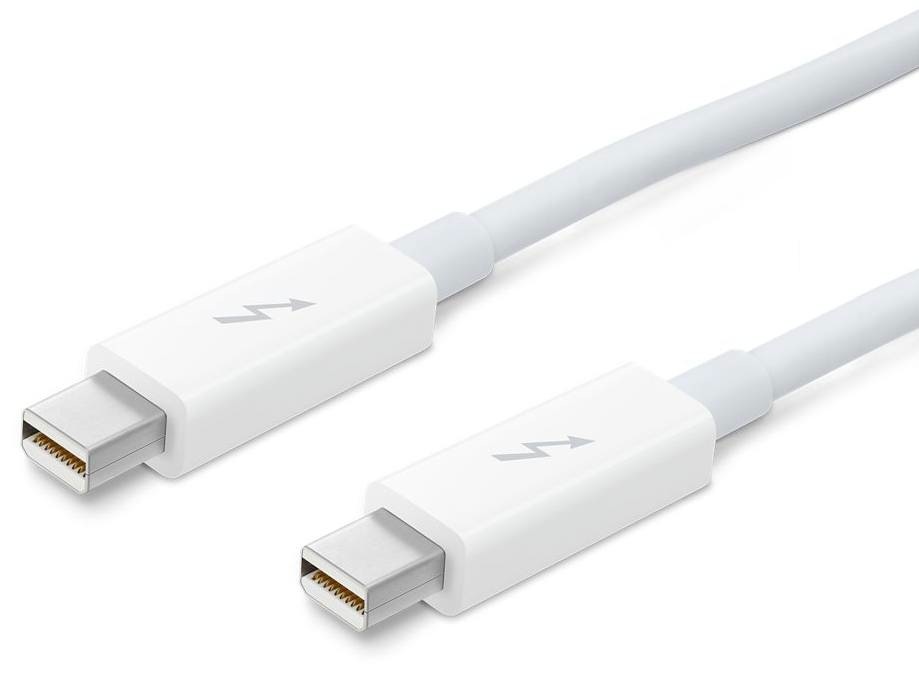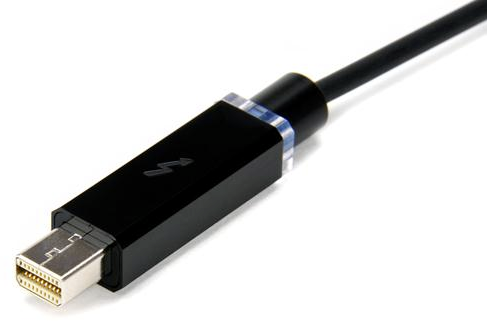As is the case with the new Lightning I/O, part of the reason why Apple’s official Thunderbolt cable costs fifty bucks is the authentication chip and electronics inside the connector on each end of the cable. So if you’re in the market for a Thunderbolt cable, there’s some good news: Apple has generously slashed the price of the 2-meter Thunderbolt cable by ten bucks, from $49 to $39. And in order to appeal even more to price-conscious buyers, the company is adding a new 0.5-meter cable to the mix, priced at $29…
The price change was first noted by 9to5Mac.
Thunderbolt was released in mid-2011 as a collaborative effort between Apple and chip giant Intel. The high-performance all-digital I/O offers high data throughput, small footprint and can daisy-chain up to seven devices.
According to Apple:
With Thunderbolt, you get superfast data transfer speeds and huge expansion capabilities. It features two 10-Gbps data channels per port, which means data transfer is up to twice as fast as USB 3 and up to 12 times faster than FireWire 800.
Use the Apple Thunderbolt Cable to connect your Thunderbolt-equipped peripherals to your iMac, Mac mini, MacBook Pro, or MacBook Air. The cable can also be used for target disk mode between two Mac computers that support Thunderbolt, or to use an iMac as a display for a MacBook Pro equipped with Thunderbolt.
Despite the initial excitement, the technology is slowly gaining ground.
Support from third-parties is mostly limited to external storage, displays like Apple’s Thunderbolt Display, professional digital cameras and A/V equipment.
For example, I typically hook up my MacBook Air to a 27-inch Thunderbolt display via a single Thunderbolt cable. The technology moves bits around really fast. A single cable effectively powers my notebook and expands on its limited ports with the display’s three USB ports, Gigabit Ethernet and FireWire 800, also adding its FaceTime HD camera, mic and stereo speakers.
Intel at CES introduced optical Thunderbolt cables that allow for much longer cable lengths. But unlike today’s copper cables, optics cannot provide power to peripherals.
Glass maker Corning quickly followed up with a 100-foot (30 meter) optical cable of its own (above). Despite their length, these new cables are said to be as thin and flexible as any USB cable.


